Her Tongue on My Theory: Images, Essays and Fantasies 1994
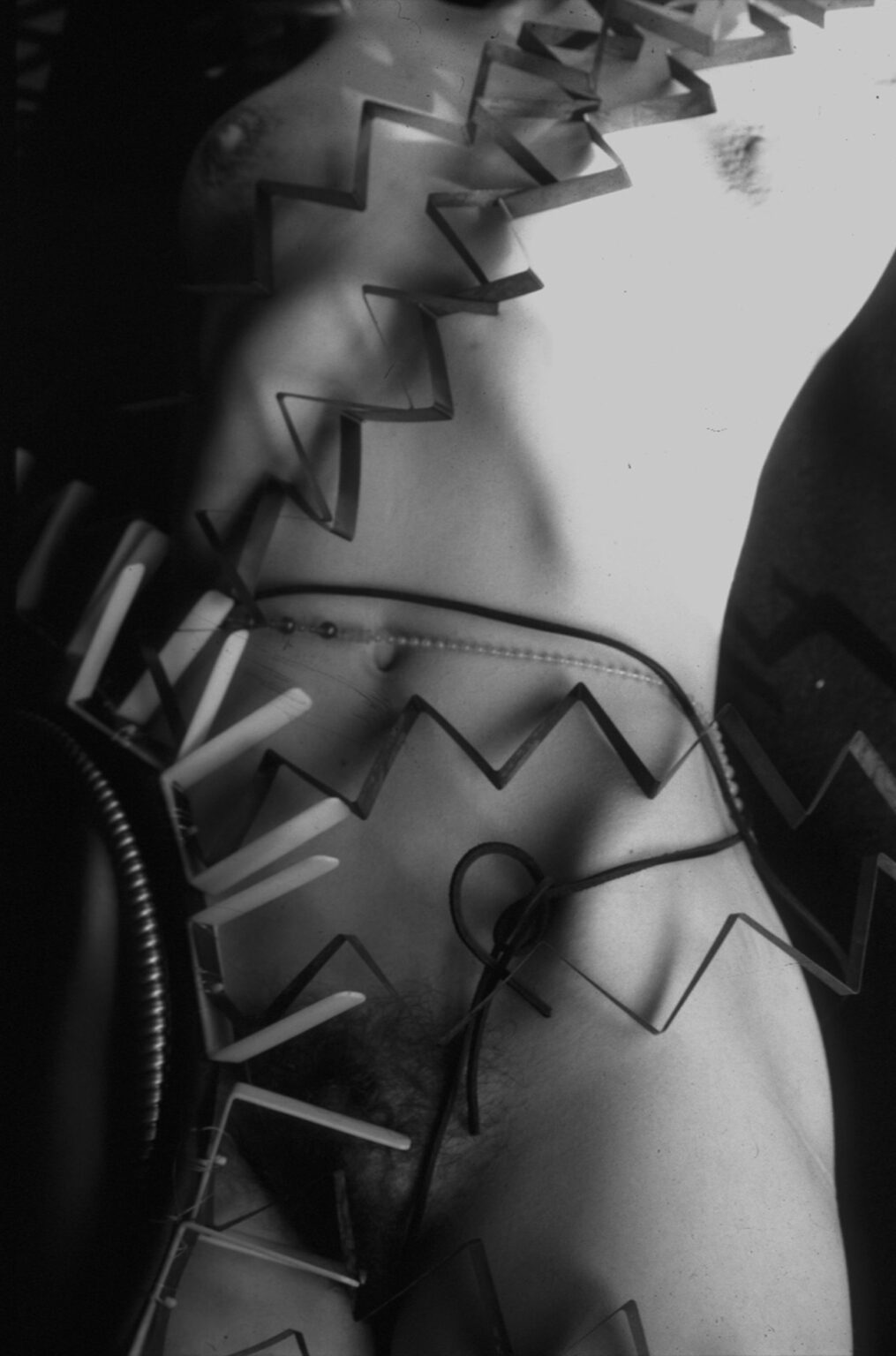
Kiss & Tell, Her Tongue on My Theory: Images, Essays and Fantasies, 1994
Book published by Press Gang Publishers
The image above was photographed by Susan Stewart and reproduced in Kiss & Tell’s book Her Tongue on My Theory.
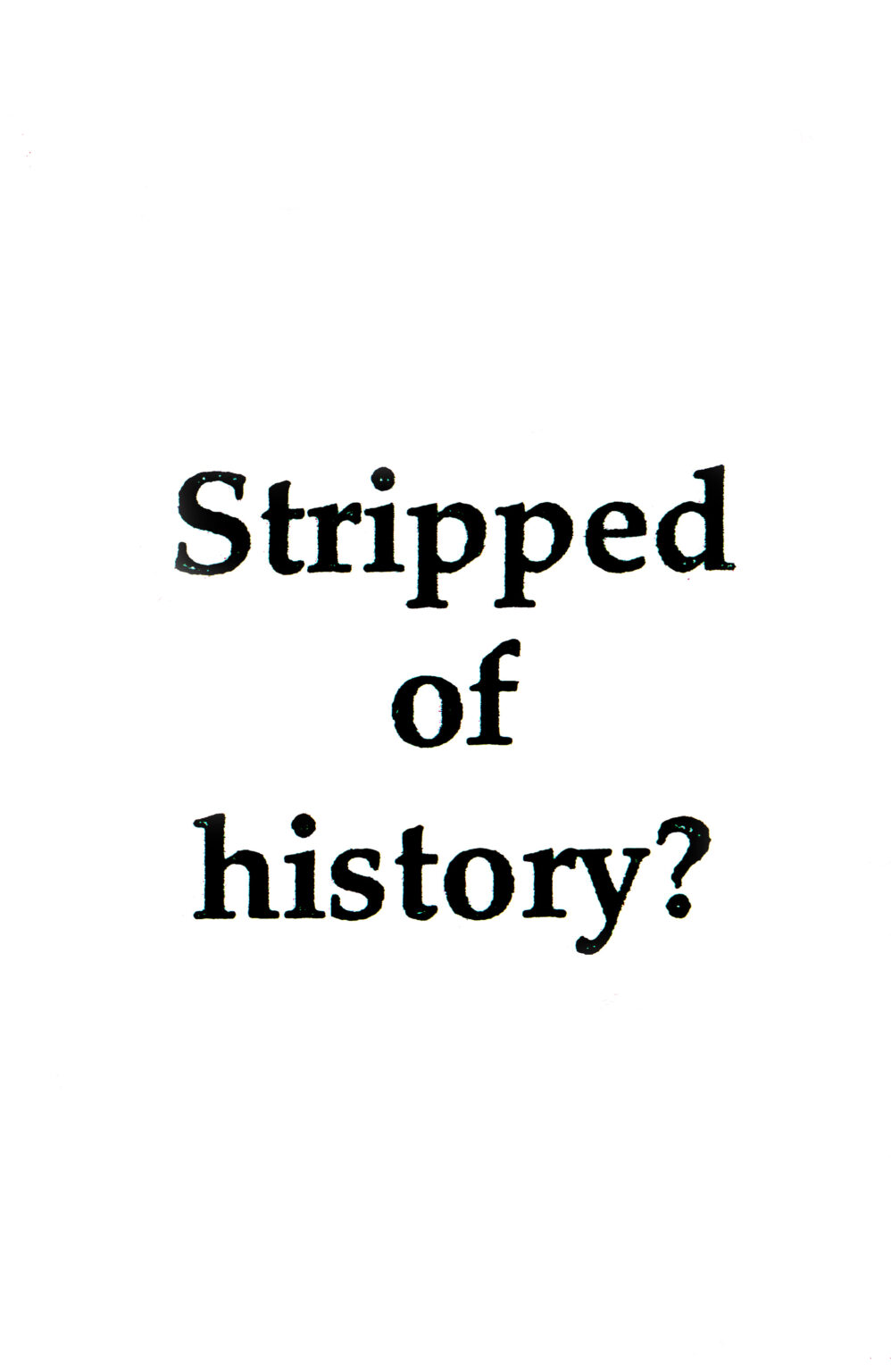
Writing and textual analysis were central elements of Kiss & Tell’s art practice. Their collaborative book Her Tongue on My Theory: Images, Essays and Fantasies functioned as a manifesto of sorts by analyzing the social and political contexts that informed their work. The book brought sexual fantasies to light and questioned the traditional meanings given to photographic representations of women’s naked bodies. It further cemented the collective’s reputation when it won two Lambda Literary Awards for the best LGBTQ book in the categories of Lesbian Studies and Small Press Book.
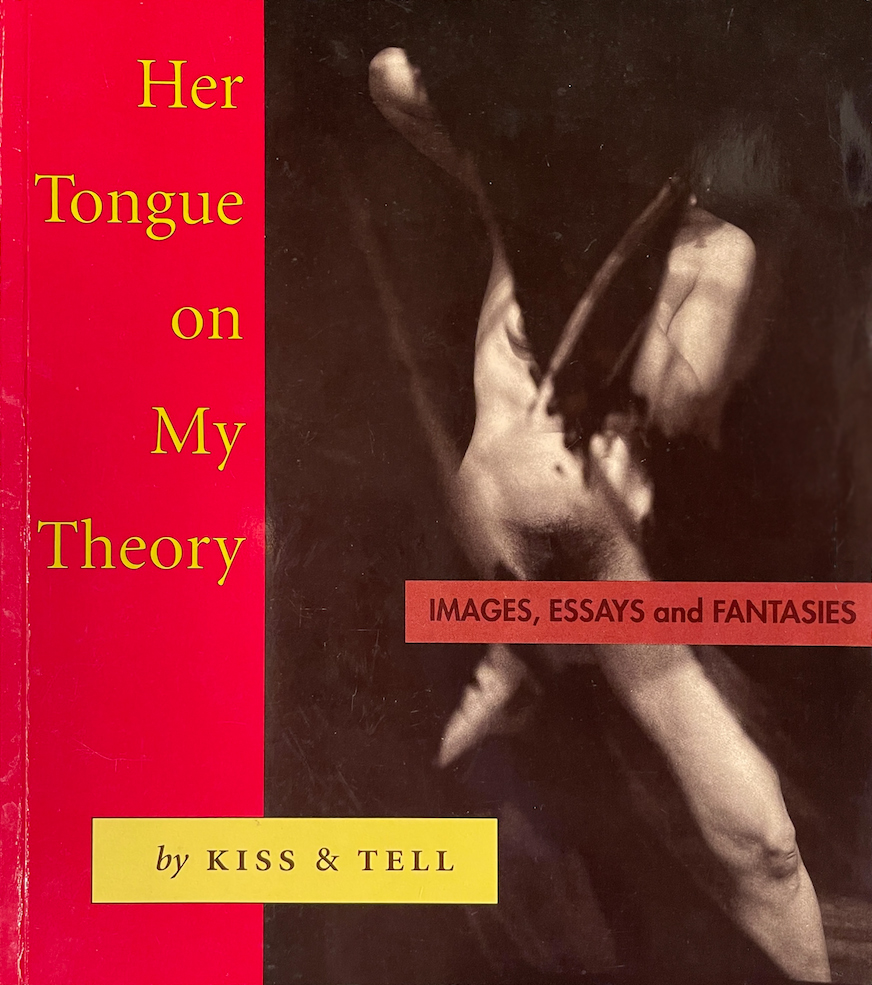

Designed by Lizard Jones, the layout of the book resembled the collective’s performances: layered and multi-faceted. The title comes from one of the book’s fictional sexy stories about a woman who keeps meeting a mysterious lover on her travels. While collecting feminist theory texts for a guest lecture, the protagonist sees her lover, whose name she does not know, in a university bookstore. They end up in a private area of a library and have sex: “Her hand under my shirt squeezing my nipple, pain making me gasp, her tongue on my theory.” Throughout the book, theorical discussions are entwined with sapphic sexual practices, a major tenet of the collective’s overall oeuvre.
Much like Kiss & Tell’s multimedia performances, the book combined sexual representations with discussions of sexual theory, artistic processes, and censorship. Photographs of the collective’s nude bodies were interspersed throughout Her Tongue on My Theory. Susan Stewart explained that she photographed herself nude in her studio and included these images to “break down the assumed hierarchy of photographer/model” that people assumed were part of the Drawing the Line project.
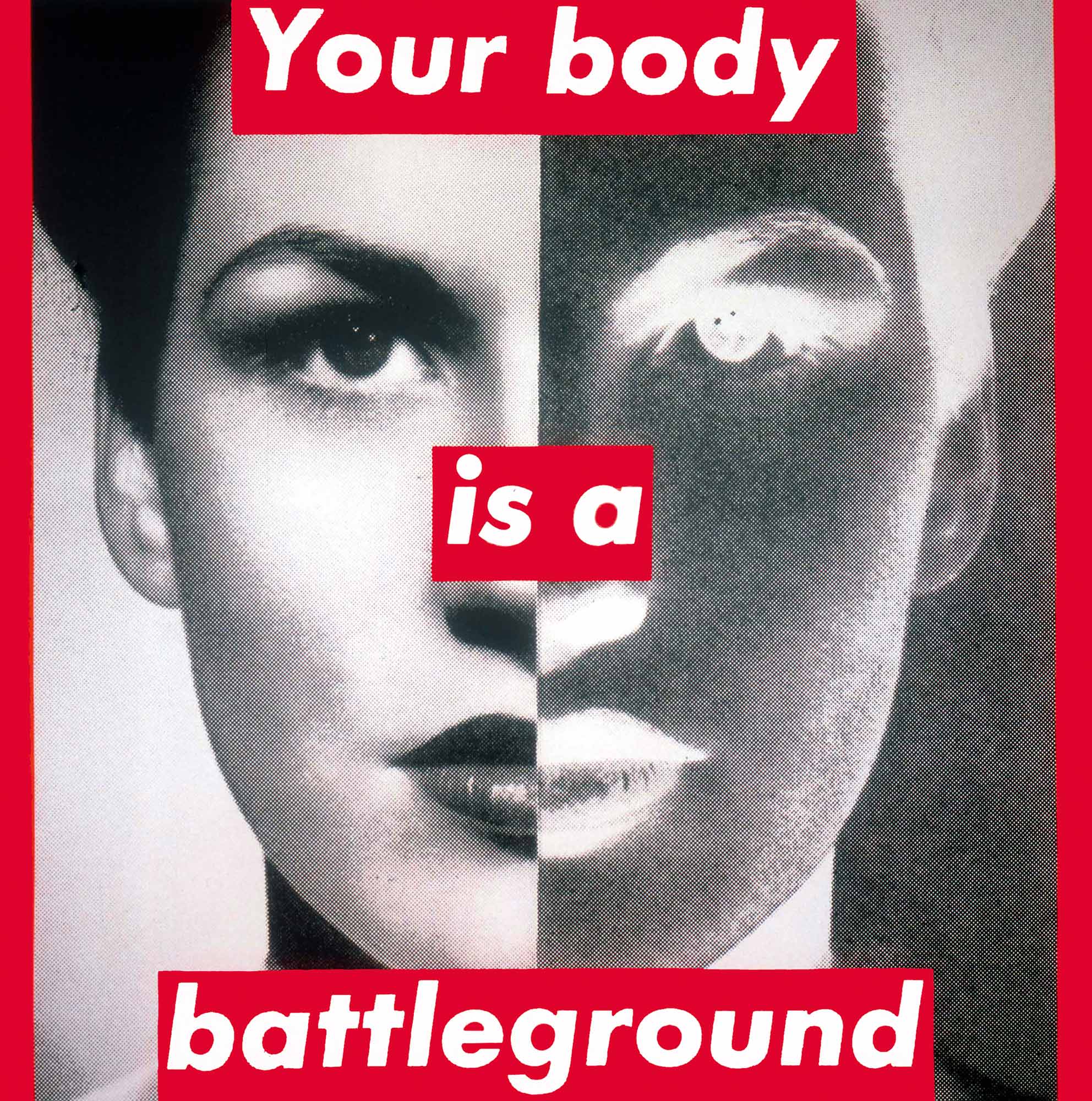
Statements accompanied the black-and-white photographs of the artists’ bodies: “Maybe I’m exactly what you think I am.” “Spot the invisible disability.” “Presumed homosexual unless specified otherwise.” Here Kiss & Tell engaged in a Barbara Kruger–style tactic, compelling viewers to examine images more closely by including text and using pronouns such as “you.” Kiss & Tell’s statements and questions beside the photographs turned viewers into voyeurs and ensured that the artists’ bodies weren’t merely sources of titillation (although they could also have that function). The photographs were vehicles to observe and question societal norms and assumptions about whiteness, queerness, sexuality, and ableism.
The book included short stories at the bottom of pages, as well as many stills from the 1992 True Inversions video. Larger photographs, projected as slides during the True Inversions performances, were paired with questions that made viewers reconsider what they were looking at: “Do I look like a lesbian?” “Is this sex?” “Whose absence is guaranteed by my presence?” The question “Do you notice my white skin and unbroken limbs?” drew attention to the problematic assumption that whiteness and ableism constitute the “normal” standard of beauty—and asked viewers to reflect on why that is.
With this book, Kiss & Tell once again refused to be censored. They made sure that the sexy talk and imagery continued in tandem with writing that reflected on the feminist sex wars, the particularities of Canadian censorship laws, the controversy over True Inversions at the Banff Centre, the genesis of the Drawing the Line exhibition, and the importance of transgressive lesbian visibility. The book tackled issues such as authorship, political correctness, equality, queer art, and freedom of speech. In it, Lizard explained: “I make art for queers first, cherish queer praise, wince at queer criticism. I want straights and the art world to be there, but do I care what they think? If they don’t laugh, does that mean there is no joke? They live with me, down the hall, share an office, but they don’t live here, in my queer city.”
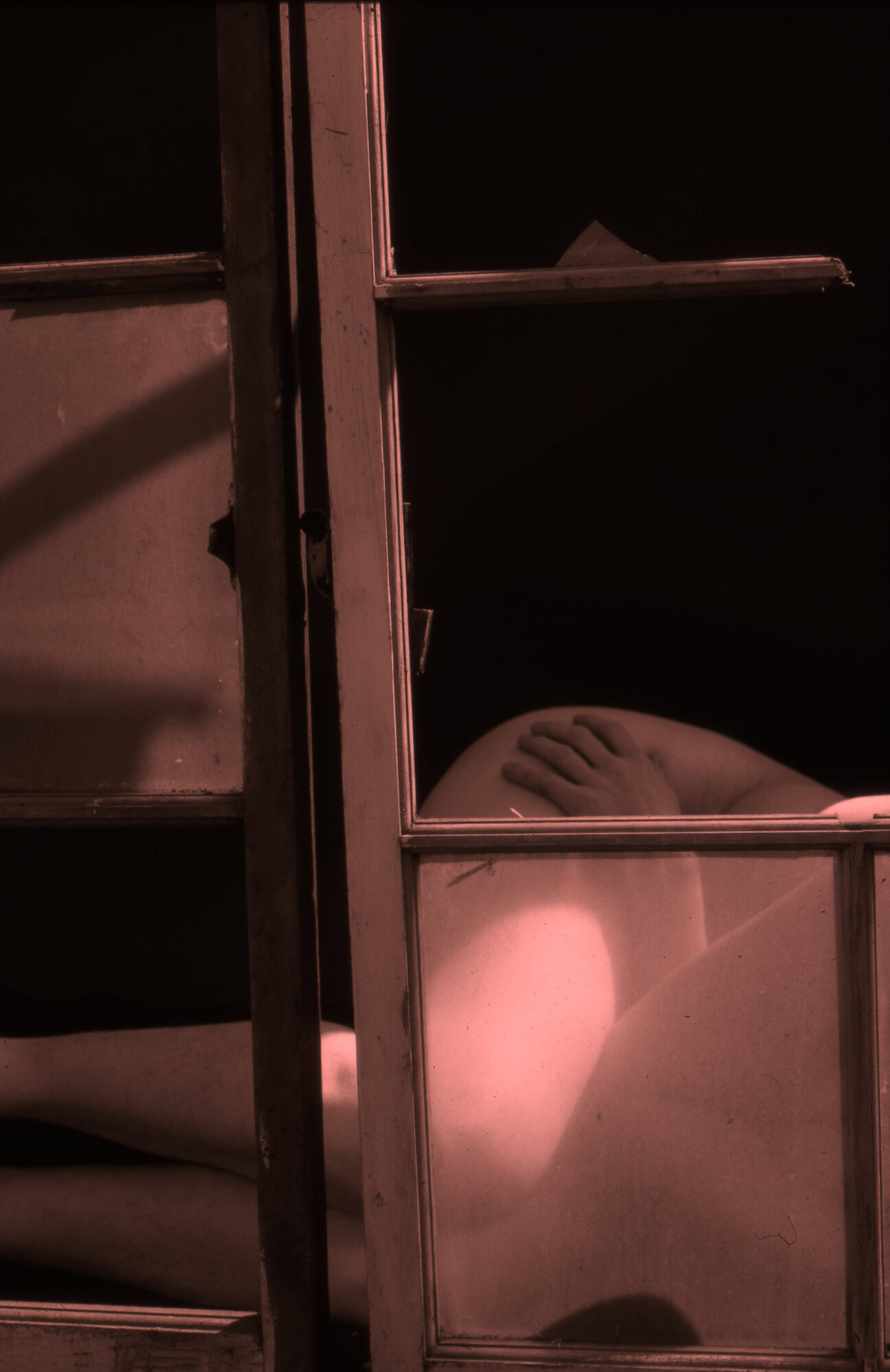
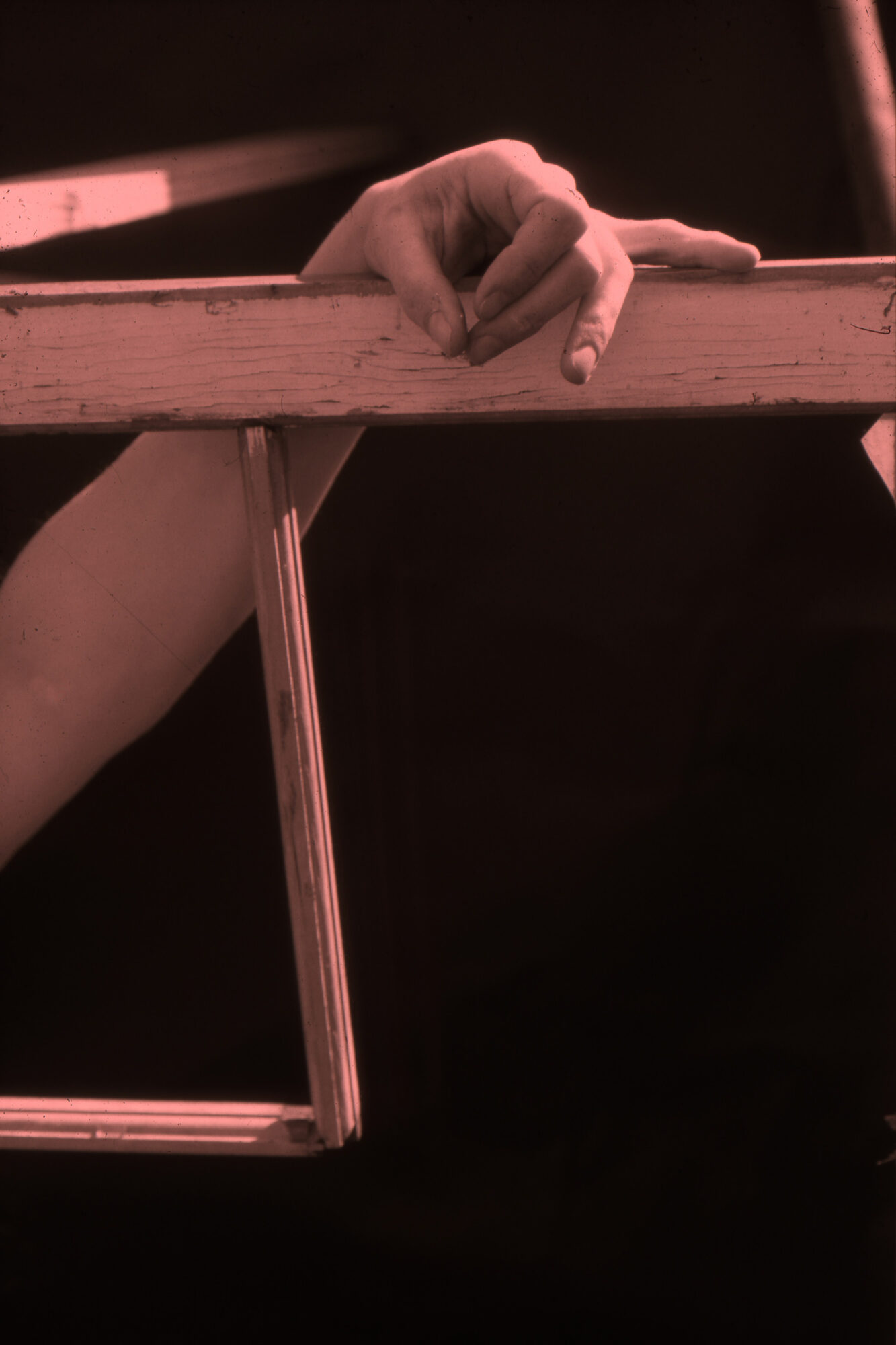
In 1993, Lizard and Persimmon Blackbridge went on a book tour across Canada, during which they talked about Drawing the Line, showed slides, and performed monologues. The tour included some unusual venues, such as a student pub at Dalhousie University in Halifax, where a group of young lesbians surrounded the stage and listened intently while the rest of the bar patrons drank boisterously. Susan couldn’t take part in the tour so filmmaker (and Kiss & Tell’s frequent collaborator) Lorna Boschman (b.1955) made a video recording of her reading a passage about coming out to herself: “There was no way on earth that I could articulate this insurrection that was brewing at the depths of my being. Mere speech felt far too hazardous. The way I, and the women I worked with, found to describe this and other contradictions in our lives was by making pictures, photographs.”

 About the Author
About the Author
 More Online Art Books
More Online Art Books
 Acknowledgements
Acknowledgements